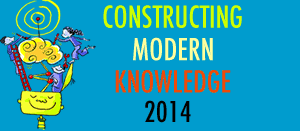Heard about the new Google Applications (Apps)?
Google Apps offers free to use:
- Word-processor
- Spreadsheets and charts
- Basic web page maker
- Calendar
- Talk and chat
- Coming soon - Presentations
- Rumored to come soon - whiteboards, project management and more
You simply use your browser to access everything and your data is stored online by Google. While Google Apps are free, there are other considerations schools should think about when making a choice between Google Apps and other Office-like applications, free, open-source, or not.
The good news:
- Free
- Makes sharing documents easy
- Works with other Google tools (Blogger)
- Chat and collaboration features integrated inside documents
- Easy to access documents and data from any computer anywhere in the world
- Quick to implement
- Simple interfaces have features most people use
- Works well with Microsoft Word documents
- Single user (free), Education (free to accredited K-12 and higher ed organizations) and Premier ($50 per user) versions offer various features and administrative tools (Compare versions)
- The free education version offers many of the features of the Premier version (such as admin control, single sign-on and phone support)
The bad news:
- What happens when the net goes down?
- Access could be compromised with a stolen password
- Ads in email (for teachers)
- No backup capability (other than “save as” to a local drive)
- Not as full featured as Microsoft Office products
Collaboration
The major benefit of Google Apps for schools is the ability for users to share and modify documents in real time, online. A good use for Google apps might be for a shared document where several teachers are planning a lesson or event, or students are collaborating on an assignment. Since the setup is so easy (and free!) there is no downside to trying it out.
Education support
Google has been very supportive of educators with their suite of tools, and Google Apps continues that tradition.
Check out the Google page for educators which links to discussions, blogs, groups and more. The Infinite Thinking Machine site sponsored by Google has several people contributing posts and videos about using Google Apps and other tools in schools. For example, this link by Lucie deLaBruere has lesson plans and template that for using a Google spreadsheet with students. Google allows you to set the preferences for the docs and spreadsheets so they can be private, shared with a group, viewable (but not editable) or publicly editable.
By the way, Lucie is a TechYES teacher at St. Alban’s City School in St. Albans, VT.
Student use
For students to use the Google Apps, they will need an email address to access the service. It does NOT have to be a gmail account. Many of our GenYES schools use Gaggle.net, which offers extensive security and control features designed especially for schools. The good news is that Gaggle.net and Google can be integrated (Gaggoogle? Googaggle?) and both of them can be configured to use the school or district domain.
If student email is still an issue, it might be time to try again at your district. They can’t say no forever (can they?) Something like “C’mon people, it’s 2007! Students need email!” We need to teach student to use all these tools in educationally appropriate ways, or we shouldn’t be surprised when they use them inappropriately.
- Ideas for using Google Apps with students (TechLearning blog)
- Examples from a teacher using Google Apps with students (Ed Tech blog by from the San Mateo Union High School District in California)
- Discussion of Google Apps for schools (Tim Lauer of The Savvy Technologist blog)
System requirements
Finally, this may be the straw that breaks the camel’s back. Even if you can afford Office, to upgrade to the latest version of Office 2007 you need a powerful machine (real system requirements for Office 2007.) Google Apps just needs a computer with a decent Internet connection and a fairly recent browser.
So is it ready for prime time?
Well, apparently Arizona State University thinks so. Last fall, ASU migrated 65,000 students from its old email system onto Google Apps. While primarily for email, it shows the enterprise level of support Google is prepared to offer. Would I trust Google docs with my grant report and budget that’s due next week and needs input from 5 people? Maybe, if I saved to my hard drive a lot. Sure beats emailing spreadsheets around.
The nice part is, it’s remarkably easy to set it up for one classroom, or to pick and choose from the different applications. So give it a try and let us know!
